Today’s Current Affairs: 25th Sep 2023 for UPSC IAS exams, State PSC exams, SSC CGL, State SSC, RRB, Railways, Banking Exam & IBPS, etc
Table of Contents
The Mediation Act, 2023:

The Parliament has passed the Mediation Bill 2023.
- Mediation is a voluntary process in which parties try to settle disputes with the assistance of an independent third person (the mediator).
- A mediator does not impose a solution on the parties but creates a conducive environment in which they can resolve their dispute.
- The mediation process depends on the choice of parties, and there are no strict or binding rules of procedure.
Types of Mediation:
Court Referred Mediation:
- Salem Advocate Bar Association, Tamil Nadu v. Union of India: In the case, Supreme Court held in reference to the matter of mediation that conciliation and arbitration are mandatory for court matters.
- This judgment has granted legal and social recognition to mediation as a dispute resolution in India.
Private Mediation :
- In private mediation, a qualified mediator is appointed by the parties on a fixed-fee basis. Both the parties come together to resolve the issue amicably.
- The decision of the mediator is not ultimate and hence not binding on the parties.
Basel-III Capital Framework : Reserve Bank Of India
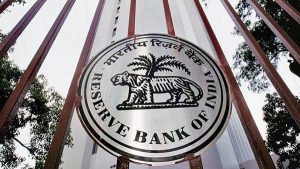
The Reserve Bank of India (RBI) has introduced new norms based on the Basel III capital framework for All India Financial Institutions (AIFIs), which will take effect from April 2024.
- India has five AIFIs under RBI regulation: Export-Import Bank of India (EXIM Bank), National Bank for Agriculture and Rural Development (Nabard), National Bank for Financing Infrastructure and Development (NaBFID), National Housing Bank (NHB), and Small Industries Development Bank of India (SIDBI).
The key provisions of the new norms are as follows:
- AIFIs will be required to maintain a minimum total capital of 9 per cent by April 2024.
- This includes a minimum tier-I capital of 7 percent and common equity tier-I (CET-1) capital of 5.5 percent.
- Consolidation of Financial Subsidiaries: All financial subsidiaries, except those involved in insurance and non-financial activities (both regulated and unregulated), must be fully consolidated for the purpose of capital adequacy.
- Investment Caps: The RBI has imposed limits on AIFIs’ investments in capital instruments of banking, financial, and insurance entities, capping them at 10 percent of their capital funds.
- Equity Investment Limits: AIFIs’ equity investment in a single entity cannot exceed 49 percent of the equity of the investee.
- Capital Planning and Risk Management: AIFIs are advised to focus on effective and efficient capital planning and long-term capital maintenance.
BASEL-III Norms:
- Basel-III norms were adopted by financial regulators to improve the banking sector’s ability to absorb shocks arising from financial and economic stress.
- It was developed by the Basel Committee on Banking Supervision in the aftermath of the financial crisis of 2007-08.
- It mandates banks to maintain a CAR or Capital to Risk-weighted Assets (CRAR) of at least 8%.
- CRAR is a ratio that compares the value of a bank’s capital (or net worth) against the value of its various assets weighted according to risk.
Juno : Solar-Powered NASA Spacecraft
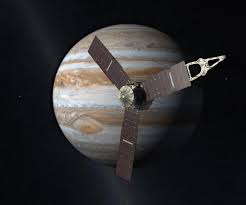
Juno is a solar-powered NASA spacecraft that makes long, looping orbits around giant planet Jupiter.
- Juno was launched on 5th August, 2011.
- The spacecraft traveled roughly 3 billion kilometers before arriving at Jupiter in 2016.
- Juno conducted its 53rd close flyby of Jupiter, capturing a remarkable image of Jupiter and its volcanic moon Io, on 31st July 31, 2023.
- Io is known for its intense volcanic activity, with hundreds of erupting volcanoes spewing molten lava and sulfurous gasses.
- It is slightly larger than Earth’s Moon, and is tidally locked to Jupiter and completes both its rotation on its axis and orbit around Jupiter in approximately 1.8 Earth days.
Women’s Reservation Bill 2023:
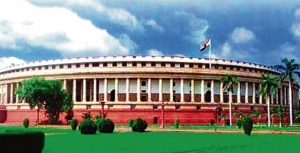
The Lok Sabha (LS) and Rajya Sabha (RS), both passed Women’s Reservation Bill 2023 (128th Constitutional Amendment Bill) or Nari Shakti Vandan Adhiniyam.
- The bill reserves one-third of the seats in Lok Sabha, State legislative assemblies and the Delhi assembly.
- This will also apply to the seats reserved for SCs (Scheduled Castes) and STs (Scheduled Tribes) in Lok Sabha and State Legislatures.
Key Features of the Bill:
Reservation for Women in Lower House:
- The Bill provided for inserting Article 330A to the constitution, which borrows from the provisions of Article 330, which provides for reservation of seats to SCs/STs in the Lok Sabha.
- The Bill provided that reserved seats for women may be allotted by rotation to different constituencies in states or Union Territories.
- In the seats reserved for SCs/STs, the Bill sought to provide one-third of the seats to be reserved for women on rotational basis.
Reservation for Women in State Legislative Assemblies:
- The Bill introduces Article 332A, which mandates the reservation of seats for women in every state Legislative Assembly.
- Additionally, one-third of the seats reserved for SCs and STs must be allocated for women, and one-third of the total seats filled through direct elections to the Legislative Assemblies shall also be reserved for women.
Reservation for Women in NCT of Delhi ( New clause in 239AA):
- Article 239AA to the constitution grants special status to the Union Territory of Delhi as national capital with regards to its administrative and legislative functioning.
- Article 239AA(2)(b) was amended by the bill accordingly to add that the laws framed by parliament shall apply to the National Capital territory of Delhi.
Commencement of Reservation (New article – 334A):
- The reservation will be effective after the census conducted after the commencement of this Bill has been published.
- Based on the census, delimitation will be undertaken to reserve seats for women.
- The reservation will be provided for a period of 15 years. However, it shall continue till such date as determined by a law made by Parliament.
Rotation of Seats:
- Seats reserved for women will be rotated after each delimitation, as determined by a law made by Parliament.
Artificial Reef (AR):

To promote sustainable practises, the Department of Fisheries has sanctioned 732 artificial reef units for 10 coastal states as a sub-activity under the “Integrated Modern Coastal Fishing Villages” of Pradhan Mantri Matsya Sampada Yojana (PMMSY).
- Artificial Reefs (AR) is a manmade structure that may mimic some of the characteristics of a natural reef.
- These are engineering technology interventions used to rehabilitate and/or improve natural habitats, increase productivity, and manage aquatic resources, including habitat enhancement (FAO, 2015).
- Materials used to construct artificial reefs have included rocks, cinder blocks, and even wood and old tyres, which come in an infinite number of shapes and styles.
- The projects are being implemented with the technical support of the Fisheries Survey of India (FSI) and ICAR-Central Marine Fisheries Research Institute (CMFRI).
- Advantages of AR:
- It boosts marine biodiversity.
- It encourages fish population growth.
- It reduces pressure on natural reefs.
Pradhan Mantri Matsya Sampada Yojana:
- It is a flagship scheme for focused and sustainable development of the fisheries sector in the country, with an estimated investment of Rs. 20,050 crores for its implementation during a period of 5 years from FY 2020-21 to FY 2024-25 in all States/Union Territories.
- It aims at enhancing fish production by an additional 70 lakh tonnes by 2024-25.
- Increasing fisheries export earnings to Rs.1,00,000 crore by 2024-25.
- Doubling the incomes of fishers and fish farmers, reducing post-harvest losses from 20-25%.
Norman E. Borlaug Award:
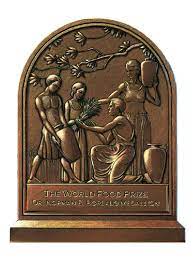
Indian agriculture scientist Swati Nayak won the prestigious Norman E. Borlaug Award for 2023.
- Norman E. Borlaug Award recognises exceptional scientists under 40 and someone who works in the field of food and nutrition security and hunger eradication.
- It is given in memory of the Nobel awardee and Green Revolution’s chief architect Dr Norman Borlaug.
- The award will honour an individual who is working closely and directly “in the field” or at the production or processing level with farmers, animal herders, fishers or others in rural communities in any discipline or enterprise across the entire food production, processing, and distribution chain.
- The award diploma incorporates the image of Dr. Borlaug at work in the fields of Mexico and a cash prize of $10,000.
- It is endowed by the Rockefeller Foundation and will be presented every October in Des Moines, Iowa, by the World Food Prize Foundation.
G4 Countries:
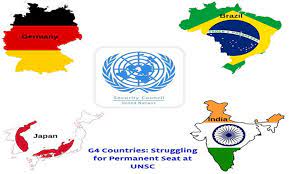
The G4 countries have reiterated that expansion of UN Security Council in both permanent and non-permanent categories is essential to make the body more representative, legitimate, effective and efficient.
- The G4 is a grouping of Brazil, Germany, India and Japan which are aspiring to become permanent members of the UNSC.
- They are supporting each other’s bids for permanent membership of the UNSC.
- The G4 nations traditionally meet on the sidelines of the annual high-level UN General Assembly session.
- The Uniting for Consensus (UfC), or the Coffee Club, emerged in the 1990s in opposition to the potential extension of permanent seats on the UN Security Council.
- Italy along with Pakistan, Mexico and Egypt founded the Coffee Club in 1995 to reject the proposal to increase the number of permanent seats in the UNSC.
UN Security Council:
- EST: United Nations charter in 1945
- HQ: New York City, USA.
- Members: 15 members
- Permanent members with veto power (P5 members): the United States, the Russian Federation, France, China and the United Kingdom.
- Non-permanent members: The non-permanent members of the Security Council are elected for a term of two years.
Mt. Semeru Volcano:
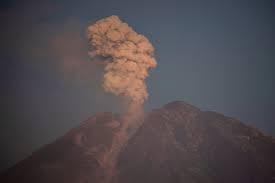
Mt. Semeru volcano in Indonesia’s East Java province erupted
- Mt. Semeru volcano is an active volcano in East Java, Indonesia.
- It is located in a subduction zone, where the Indo-Australia plate subducts under the Eurasia plate.
- It is the highest mountain on the island of Java.
- The name “Semeru” is derived from Meru, the central world mountain in Hinduism, or Sumeru, the abode of gods.
- Indonesia sits on the Pacific Ring of Fire, where the meeting of continental plates causes high volcanic and seismic activity.
- Pacific Ring of Fire also known as the Circum-Pacific Belt, is a path along the Pacific Ocean characterised by active volcanoes and frequent earthquakes.
- Its length is approximately 40,000 kilometres.
Bolson Tortoises:

Biologists are in a slow and steady race to help North America’s largest and rarest Bolson tortoise species.
- Bolson tortoises is the largest and rarest land reptile, as well as the rarest of the six Gopherus species native to the North American Continent.
- Adult males are generally smaller than females in this species.
- The tortoise is a land-dwelling reptile that spends more than 95% of its time in a burrow that it constructs with its shovel-like front feet.
- All foraging, nesting and mating activities take place during the tortoise’s active season from roughly April to October.
- The average life span of a Bolson tortoise is not known but probably lies upward of a century.
- This species at present, is restricted to a relatively small area of the grasslands of north-central Mexico in the states of Chihuahua, Coahuila and Durango, where it exists in disjunct sub-populations.
- Conservation status:
- IUCN: Critically Endangered
Jhelum River : Water Level Fallen
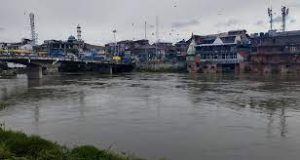
The water level of Jhelum and its tributaries have fallen drastically owing to dry weather conditions prevalent in Kashmir Valley.
- It is a river that flows in India and Pakistan.
- It is a tributary of the Indus River.
- The Jhelum (Vyeth in Kashmiri, Vetesta in Sanskrit and Hydaspes in Greek) is the main waterway of the Kashmir valley.
- It is the largest and most western of the five rivers of Punjab and passes through the Jhelum District in the North of Punjab province, Pakistan.
- It originates at the Verinag Spring at Anantnag, at the foot of the Pir Panjal range in the Kashmir Valley.
- It then flows via Srinagar and Wular Lake prior to entering Pakistan.
- The river makes a deep, narrow gorge on its way to Pakistan.
- It joins the Chenab River near Trimmu, Pakistan.
- It has a total length of about 725 km (450 mi).
- The largest tributary of the Jhelum is the Kishenganga (Neelum) River, which joins near Muzaffarabad and enters the Punjab province, Pakistan.
- Kunhar River is the second largest tributary of the river, which connects Pakistan-occupied Kashmir (PoK) and Pakistan on the Kohala Bridge of Kanghan Valley.
Free Movement Regime:

Manipur Chief Minister recently said that his government has urged the Union Home Ministry to cancel the free movement regime along the India-Myanmar border and complete its fencing.
- Under the FMR, all the hill tribes, whether they are citizens of India or Myanmar, can travel within 16 km on either side of the Indo-Myanmar Border (IMB).
- They can cross the border by producing a border pass with a one-year validity issued by the competent authority and can stay up to two weeks per visit.
- The FMR was implemented in 2018 as part of the Central government’s Act East policy.
- FMR is implemented by both governments for the people living along the IMB.
- This helps locals to get more culturally assimilated with trans-border villages through weddings, celebrating common festivals together and trans-border trade.
- It is a reflection of the physical, ethnic, linguistic, cultural and fraternal linkages among the trans-border villagers.
Indo-Myanmar Border (IMB):
- It runs for 1,643 km in the four states of Mizoram, Manipur, Nagaland, and Arunachal Pradesh.
- It runs from the tripoint with China in the north to the tripoint with Bangladesh in the south.
- Assam Rifles is tasked with guarding the IMB.
Fatehpur Sikri : French Tourist Recently Died
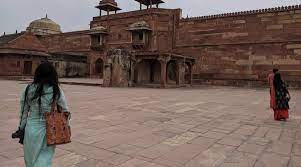
A 61-year-old French tourist recently died inside the Fatehpur Sikri fort after she fell from a nine-feet-high platform following the collapse of a wooden railing.
- Fatehpur Sikri is a city predominantly in red sandstone, situated at a distance of 37 km from Agra, Uttar Pradesh.
- It was founded in 1569 by the great Mughal emperor Akbar, and from 1571 to 1585, Fatehpur Sikri was the capital of the Mughal Empire.
- The Mughal capital was moved to Delhi in 1586 because of Fatehpur Sikri’s inadequate water supply.
- It was designated a UNESCO World Heritage site in 1986.
- The structures in Fatehpur Sikri combine elements of Persian, Indian, and Central Asian styles.
- The structures are made primarily of red sandstone, which gives the city its distinctive appearance.
- It is enclosed by an 11 km long fortification wall interspersed with numerous gateways.
Conservation Of Foreign Exchange And Prevention Of Smuggling Activities (COFEPOSA) Act, 1974:

The Madras High Court recently quashed a detention order issued under the Conservation of Foreign Exchange and Prevention of Smuggling Activities Act (COFEPOSA) Act, 1974 against a practising lawyer, ordering his release.
COFEPOSA Act:
- It was passed by the Parliament on 13th December 1974, to provide for preventive detention in certain cases for the purposes of conservation and augmentation of foreign exchange and prevention of smuggling activities and for matters connected therewith.
- The Central Government or the State Government or any joint secretary of central government and secretary of state government can order the detention of a person (including a foreigner), in case of-
- Smuggling;
- Abetting smuggling;
- Transport, concealing, storing;
- Harbouring persons involved in smuggling;
- Dealing in smuggled goods;
- Any order by the State government is to be forwarded to the Central government within 10 days.
- Grounds for detention are to be communicated within 5 days to detenu. Delay of up to 15 days is allowed if the reason is given in writing.
- The detaining authority requires to satisfy the courts and also the detenu that he has acted in accordance with the laws with due consideration.
- High Courts can examine detention orders prior to execution. A detention order cannot be challenged at pre execution stage on the grounds of delay in execution.
- The order can be executed anywhere in India, similar to arrest warrants under the Code of Criminal Procedure, 1973.
Advisory Boards:
- Government should, within 5 weeks of the date of detention, make a reference to the Advisory Board.
- Advisory Board to report within 11 weeks of the detention order. If satisfied, the detention period can be extended to one year.
- If, in the opinion of the advisory board, there is insufficient cause for detention, the order is revoked, and the person is released.




